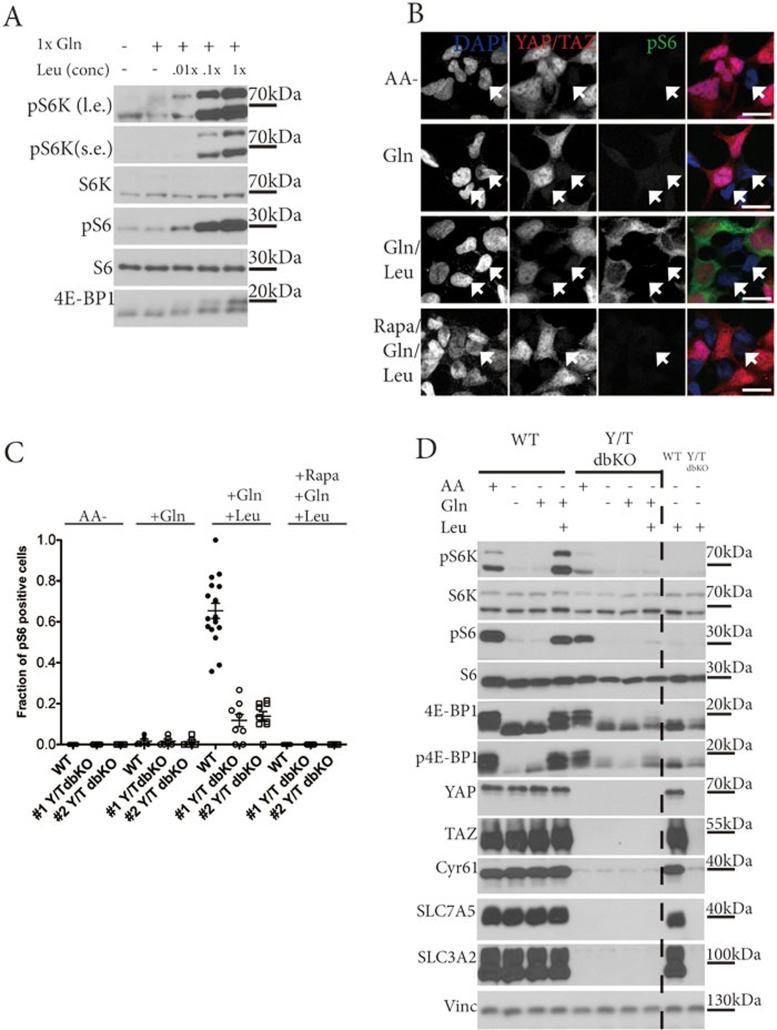Figure 1.
YAP and TAZ modulate AA-induced mTORC1 activation. (A) Glutamine (Gln) potentiates mTORC1 activation by leucine (Leu). HEK293A cells were AA starved for 6 h, then Gln stimulated for 30 min followed by 10 min of Leu stimulation. Concentrations of 0.01×, 0.1×, and 1× denote 1%, 10%, and 100%, respectively, of the leucine concentration in normal DMEM medium. mTORC1 activity is determined by western blotting for the phosphorylation of S6K, S6, and 4E-BP1. L.e. and s.e. denote long exposure and short exposure, respectively. (B) YAP/TAZ are required for mTORC1 activation by AAs. Wild-type and YAP/ TAZ double knockout (Y/T dbKO) 293A cells were co-cultured, AA starved, and stimulated with Gln and Leu as indicated. Cells were AA starved (top row), or stimulated by 1× Gln (second row), or 1× Gln and 0.1× Leu (Gln/Leu, third row), or treated with rapamycin and Gln/Leu (bottom row). Some Y/T dbKO cells, as indicated by the lack of YAP/TAZ labeling, are marked with white arrows. Note, that upon Gln/Leu stimulation only wild-type (positive YAP/TAZ labeling) cells show positive pS6 signal, a marker of active mTORC1. See Supplementary information, Figure S1D for full size image. Scale bar, 20 μm. (C) AA-induced S6 phosphorylation depends on YAP/TAZ. The fraction of pS6-positive cells per image of each genotype was quantified in experiments similar to B. n >75 cells of each genotype, per treatment. #1 and #2 denotes two independent Y/T dbKO clones. (D) YAP and TAZ dictates glutamine-potentiated leucine stimulation of mTORC1. Western blots of cell lysates from 293A WT cells and Y/T dbKO cells. Cells were AA starved for 6 h and then stimulated with 1× Gln followed by 0.1× Leu, or only 0.1× Leu. The western blot was probed to assess mTORC1 activity. Western blots were also performed for expression of YAP, TAZ, and the LAT1 high-affinity leucine transporter (comprised of SLC7A5 and SLC3A2). Cyr61 is a known target gene of YAP/TAZ, whereas vinculin (Vinc) serves a loading control.

